The Spanish Pottery
04/10/12 12:20 Filed in: Special Features
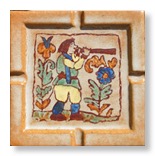
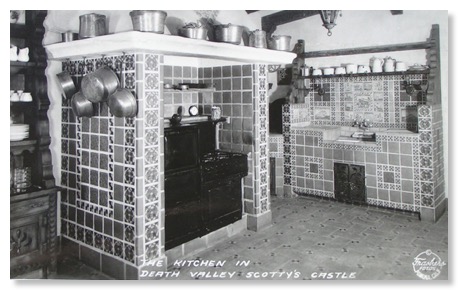
The Spanish Pottery
Circa 1927-1931
By Steven R. Soukup
The Spanish Pottery: its name alone evokes a romantic, old-world charm likely chosen to capitalize on the Mediterranean designs widespread in California; but of its history, much still remains a mystery. Along with Gladding McBean, Hispano Moresque and Alhambra Kilns this company was among the major suppliers of handcrafted tile outfitting the Death Valley ranch of Albert Johnson, now popularly known as Scotty’s Castle. How did an obscure tile company achieve this notable measure of success? Evidence points to the reputation and talent of its proprietor, Walter G. de Steiguer, formerly associated with Walter and Charles Nordhoff at California China Products Company. A Missouri native, de Steiguer was born in 1884.2 A mining engineer and geologist, he graduated from M.I.T.; going west around 1911 he found work heading the glaze department3 for the Nordhoffs in National City. As a young man of 27, here he would work alongside Fred Wilde, an older, accomplished tilewright and glaze specialist. De Steiguer stepped in to become vice-president of the operations when co-founder John McKnight left the company in 1912. There it is presumed he remained until the company ceased operations in 1917. His next few years remain sketchy, but in 19234 he is listed as Superintendent in the Tile Department at the Tropico Potteries, Inc.
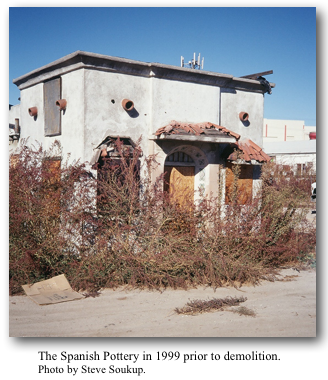
It is not yet clear when he hired on at Tropico, but he appears to have left by 1924 when he moved his residence from South Pasadena to Glendale, possibly to prepare for his next professional endeavor. Invoices dated between July 3, 1927 and May 24, 19315 confirm that by 1927, or perhaps earlier, he was fully in charge of The Spanish Pottery.
Manufacturers of plain and decorative glazed wall tile, red ware flooring tiles, ventilator tiles and specialties, The Spanish Pottery was located at 3959 Goodwin Avenue in Los Angeles, just west of Glendale. A tiny white stucco-clad and tile accented building6 remained on the site until recently: an abandoned witness to the past, lone amidst modern industry.
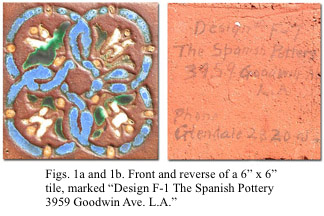
The company’s primary decorative product consisted of a series of red clay paver tiles and inserts, diverse to size and shape. The paver tiles appear to have their designs stamped by hand onto a wet clay slab before being cut into individual tiles; this could account for the characteristic “soft look” or lack of crisp mold definition frequently observed (Figs. 1a & 1b). The depressed designs were then inlaid with single or polychrome glazes. Finely decorated scenic tiles were commissioned including a tile panel series entitled El Miraje7 for a drinking fountain at Scotty’s Castle8. Similarly reminiscent of Spanish or Mexican folk pottery and executed in painterly fashion, small four-sided flowerpots were also produced along with large smoking stand tiles (Figs. 2a & 2b) fitted to wrought iron bases.
While de Steiguer was aptly qualified to oversee technical production and promote business, it is not known whether he also contributed artistically or relied on another designer. In absence of any large installations credited to The Spanish Pottery, exclusive of scattered installations at Scotty’s Castle, it is presumed that the small enterprise had limited production, which prematurely ended with the impending economic depression.
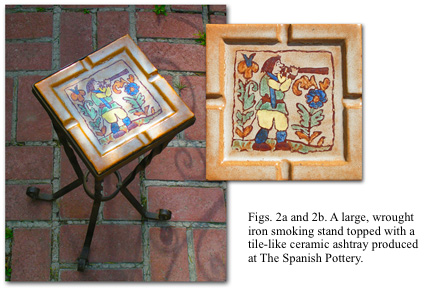
Twenty years later in 1950, Walter de Steiguer’s mystery novel titled Jewels for a Shroud was published9. The action in this work of pulp fiction takes place far from California, in New York City – “The big city slept while murder combed the causeways!” Unfortunately no biographical information regarding its author was included in the Dell paperback. For now this story ends; by late in life de Steiguer had returned to reside in his native Missouri10 notes here
